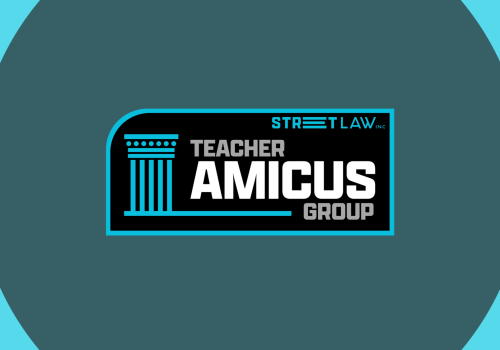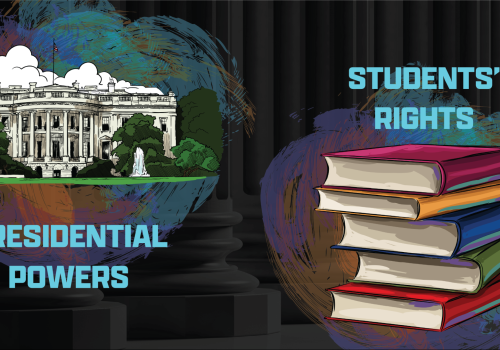New Diversity Pipeline Program Materials: Cyberbullying

Share this Article
The following activity was developed for use in Street Law’s Legal Diversity Pipeline Programs.
Street Law’s popular cyberbullying workshop presents a topic that is timely and relevant to students’ lives and provides an interesting access point to discussing the First Amendment. The workshop explores cyberbullying from a First Amendment perspective by asking the following question: In a school setting, when are administrators allowed to discipline students for online, off-campus speech, and when does such discipline violate the students’ constitutional rights?
The classroom activity introduces this topic by engaging them in a role-play about cyberbullying and introducing them to key Supreme Court cases about student speech. Students learn about what type of speech public schools can restrict and discuss ways to respond to instances of cyberbullying.
The conference workshop activity is a moot court. The students get a fictional case about a high school student who has posted negative online comments about another student—but did so outside of school. She was then punished by the principal for these actions.
The Moot Court
Format
A moot court is a role-play of an appeals court or Supreme Court hearing. The court, composed of a panel of justices, is asked to rule on a lower court’s decision. No witnesses are called. Nor are the basic facts in a case disputed. Arguments are prepared and presented on a legal question (e.g., the constitutionality of a law or government action). Since moot courts are not concerned with the credibility of witnesses, they are an effective strategy for focusing student attention on the underlying principles and concepts of justice.
In our moot court, students play the lawyers and the justices. The students are first split into three groups to prepare.
- Two groups will be student lawyers—one representing the petitioner and one representing the respondent
- The third group will be student justices
Preparation
Each group works with a facilitator to review the facts of the case, the law, and the arguments about whether or not the young woman’s constitutional rights were violated. The two lawyer groups put together their strongest arguments and practice asking questions. Meanwhile, the justices work together to come up with questions they will ask during the hearing.
The key to conducting a successful moot court lies in this preparation period. The students must be quite familiar with the area of the law at issue. They should understand that their arguments are about the legal issue in the case—not about what happened in the case or who texted whom. A skilled facilitator will guide the students through the process without providing all the answers or telling students what to say during the oral argument. The facilitator can provide scaffolding: a framework to help the students build their analysis and construct an oral argument. For instance, begin by asking relatively basic questions: what does our side want the justices to decide? What are all of the possible arguments our team could make? Which of these arguments seems the most persuasive? Move on to more complex analysis: If we were arguing for the other side, what would we say? How should our team respond to those arguments? How could the ruling we are asking for be applied to other situations? The students’ arguments need not all be about the language of the First Amendment—they can range from philosophical, theoretical, conceptual, to practical.
Moot Court Presentation
When it comes time to actually present the moot court, the facilitators can select one of two formats: (1) one large moot court, or (2) several small simultaneous moot courts.
In the large version, all the students come together, with the justices seated at the front of the room, and the two teams of lawyers facing them. Each team of student-lawyers chooses two spokespeople, who each have about 5 minutes to argue the case to the justices. The justices ask questions throughout the argument. Each side then has a short rebuttal.
In the simultaneous version (which can be better for students who are uncomfortable speaking in large groups, or when you want to more fully engage all students), you build multiple courts as follows:
- Seat 2-3 justices in one corner of the room and have two student-lawyers from each side join them.
- Seat another 2-3 justices in another corner, and match them with 2 student-lawyers from each team.
Continue in this manner until all students have been allocated to a court. Provide the same instructions about argument, questions, and rebuttal, and start all the courts simultaneously. In either version, once the arguments have concluded, the justices can announce their decisions: the ruling and their reasoning.
Debrief
The workshop concludes with a debrief of the moot court. Students are asked to reflect on three things: (1) the experience, (2) the case, and (3) the Constitution and cyberbullying in schools. With facilitators, they discuss the moot court, the process of developing arguments or questions, and the skills they employed. They discuss the ruling in this case, and how similar cases have been decided in the real world. Finally, they discuss the implications of this area of law for society and for their school. This thorough reflection helps the students take the experience and apply it to their own lives.
Companies and law firms who want to use this lesson and workshop in their Diversity Pipeline Program are encouraged to contact Street Law for more information and support in preparing to teach the topic. The materials are available in our Corporate Legal Diversity Pipeline Program electronic library and the NALP/Street Law Diversity Pipeline online program guide.



